
HMS Antelope was a British A-class destroyer, which was completed for the Royal Navy in 1930. Antelope served throughout the Second World War, taking part in the sinking of three enemy submarines and in Operation Torch, the Allied invasion of French North Africa.
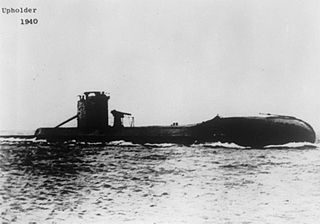
HMS Upholder (P37) was a Royal Navy U-class submarine built by Vickers-Armstrong at Barrow-in-Furness. She was laid down on 30 October 1939, launched on 8 July 1940 by Mrs. Doris Thompson, wife of a director of the builders. The submarine was commissioned on 31 October 1940. She was one of four U-class submarines which had two external torpedo tubes at the bows in addition to the 4 internal ones fitted to all boats. They were excluded from the others because they interfered with depth-keeping at periscope depth.

Lieutenant Commander Malcolm David Wanklyn, was a Royal Navy commander and one of the most successful submariners in the Western Allied navies during the Second World War. Wanklyn and his crew sank 16 enemy vessels.

HMS Legion was an L-class destroyer of the Royal Navy. She entered service during the Second World War, and had a short but eventful career, serving in Home waters and the Mediterranean. She was sunk in an air attack on Malta in 1942. The ship had been adopted by the British civil community of the Municipal Borough of Cheltenham, Gloucestershire in November 1941.
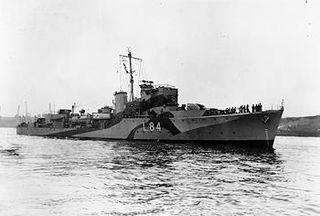
HMS Hursley was a Second World War Type II Hunt-class escort destroyer of the British Royal Navy. She is the only Royal Navy ship to have carried this name. Hursley is a village in Hampshire. Commissioned in 1942, she served in the Mediterranean, before being transferred to the Hellenic Navy in November 1943 and renamed Kriti. She took part in the landings in Sicily, Anzio, and southern France, and remained in Greek service until 1959.

HMS Safari was a third batch S-class submarine built for the Royal Navy during World War II. Commissioned in 1942, she was assigned to operate in the Mediterranean Sea. During the course of the war, Safari sank twenty-five ships, most of which were Italian.
HMS P32 was a Royal Navy U-class submarine built by Vickers-Armstrong at Barrow-in-Furness.
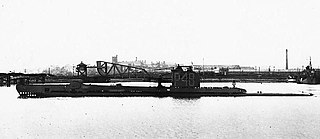
HMS P48 was a Royal Navy U-class submarine built by Vickers-Armstrong at Barrow-in-Furness. Commissioned on 18 June 1942, she spent most of her career in the Mediterranean Sea.
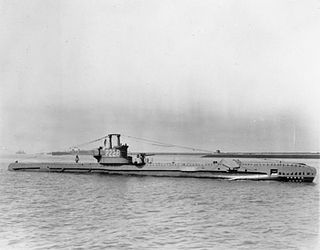
HMS Splendid was a third-batch S-class submarine built for the Royal Navy during World War II. She was laid down on 7 March 1941 and launched on 19 January 1942. After an initial patrol through the Bay of Biscay to Gibraltar, Splendid conducted two patrols in the Mediterranean Sea; one was abandoned after technical problems and on the other she sank two Italian ships. On her next patrol, the submarine attacked two Italian convoys, sinking an Italian destroyer in the second attack. Based in Algiers, the boat operated north of Sicily, sinking six Italian ships, including two tankers and two heavy merchant ships. Splendid was detected by a German destroyer on 21 April 1943 while patrolling off Naples, Italy; the submarine was attacked with depth charges by the destroyer and forced to surface, after which she was scuttled and her surviving crew members taken prisoner. She was the most successful British submarine by tonnage sunk between November 1942 and May 1943.
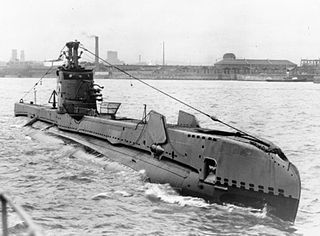
HMS Saracen was a third-batch S-class submarine built for the Royal Navy during the Second World War. Completed in 1942, Saracen conducted a patrol in the North Sea where she sank a German U-boat. She was then assigned to the 10th Submarine Flotilla in Malta, from where she made three patrols; on her second, she sank an Italian submarine. Saracen was then reassigned to the 8th Submarine Flotilla, based in Algiers, French North Africa.

HMS P47 was a Royal Navy U-class submarine built by Vickers-Armstrong. She was transferred to the Royal Netherlands Navy before completion and renamed HNLMS Dolfijn.

HMS Laforey was an L-class destroyer of the Royal Navy. She was commissioned in and served during the Second World War, and was torpedoed and sunk by a U-boat in 1944. She had been adopted by the civil community of Northampton in November 1941.

HMS Derwent was a Hunt-class Type III escort destroyer of the Royal Navy. She was built by Vickers-Armstrongs, in Barrow-in-Furness, and served during the Second World War. In March 1943, she was badly damaged while anchored in Tripoli harbour by aircraft and beached to prevent her from sinking. Temporarily repaired and towed to England, further repair work was halted in January 1945, and she was broken up for scrap in 1947.

HMS Regent was a Rainbow-class submarine designed and built by Vickers Shipbuilding and Engineering in Barrow-in-Furness for the Royal Navy, and was launched on 11 June 1930. She was lost with all hands after striking a mine on 18 April 1943.
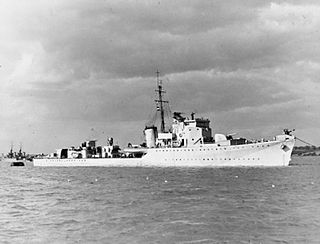
The second HMS Hambledon was a Hunt-class destroyer of the Royal Navy in commission from 1940 to 1945. She was a member of the first subgroup of the class, and saw service throughout World War II.
HMS Blencathra (L24) was a Hunt-class destroyer of the Royal Navy in commission from 1940 to 1948. She was a member of the first subgroup of the class, and saw service through most of World War II.

The second HMS Exmoor (L08), ex-HMS Burton, was a Hunt-class destroyer of the Royal Navy in commission from 1941 to 1945. She was a member of the second subgroup of the class, and saw service during much of World War II. She later served in the Royal Danish Navy as HDMS Valdemar Sejr.

HMS Airedale was a Hunt-class destroyer built for use by the British Royal Navy during the Second World War. She entered service in early 1942 as a convoy escort, being assigned to the Mediterranean Fleet in May. Airedale was sunk while escorting a convoy from Alexandria to Malta on 15 June 1942 by Sturzkampfgeschwader 3.

HMS Easton was a Type III Hunt-class destroyer of the British Royal Navy. Easton was built by the shipbuilder J Samuel White in 1941–1942, being launched on 11 July 1942 and completed on 7 December 1942.

Pegaso was a torpedo boat and an escort aviso of the Italian Regia Marina. She was one of the most successful Axis anti-submarine warships of World War II.


















